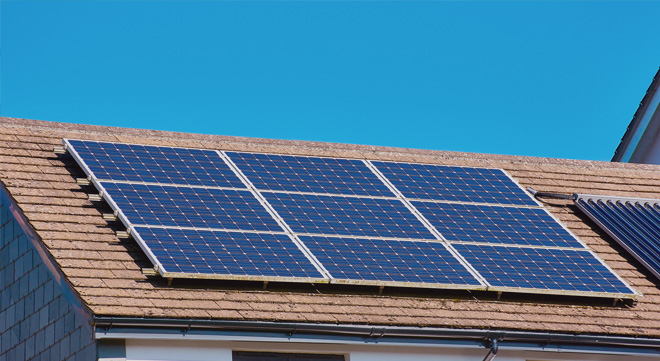When it comes to tax breaks, the devil is always in the detail. The announcement in the Budget that the diesel refund would be extended to manufacturers of foodstuffs for two years was widely welcomed. But now that the qualifying criteria for the refund have been published, the proposal is not as attractive as many assumed it would be.
Read: Food manufacturers face challenges in qualifying for a diesel refund
There was similar disappointment when National Treasury announced the terms and conditions of the solar incentive for individual taxpayers. The main let-downs are that the rebate is capped at R15 000 and applies only to the solar photovoltaic (PV) panels. The other components of a solar kit – batteries, inverters, fittings – and the installation costs do not qualify. Portable panels also do not qualify.
Read: Here are the Ts & Cs for claiming a tax rebate for installing home solar panels
Individuals will be able to claim a rebate to the value of 25% of the cost of “new and unused” solar PV panels, to a maximum of R15 000 per individual. So, if you spend R15 000 on solar PV panels, the benefit will reduce your tax due by R3 750 (R15 000 x 25%). If you want to claim the maximum benefit of R15 000, you will have to spend a minimum of R60 000 on solar PV panels alone.
So far, the only concrete information we have about the incentive for individuals is National Treasury’s three-page FAQ document. However, this document does not cover all aspects of the implications of the incentive.
I spoke to Phillip Joubert, the manager of the Centre of Tax Excellence at the South African Institute of Professional Accountants (SAIPA), about the solar incentive for individuals and the revised section 12B incentive for investing in renewable energy.
This article looks at the solar incentive for individuals; section 12B will be addressed separately.
Joubert drew attention to some of the grey areas that will, hopefully, be clarified when the draft legislation is published. Although, based on Treasury’s FAQ document, some aspects of the incentive are certain, it is important to note that the legislation will provide the final word.
The views expressed here are intended to provide “food for thought” for taxpayers whose decision to instal a solar kit may be swayed by the prospect of receiving a rebate.
Joubert said SAIPA has been told that the draft legislation will be released “shortly”. The implication is that we won’t have to wait until the publication of the annual tax amendments (Draft Taxation Laws Amendment Bill), which usually occurs somewhere around the middle of the year.
What are the tax implications of a rebate?
Non-tax experts sometimes incorrectly use the terms “allowance”, “rebate” and “refund” interchangeably as if they all mean the same thing. Joubert explained the difference between these terms.
An allowance is a direct deduction against your gross income before the relevant tax rate/s are applied to your taxable income. “This is where the revised section 12B incentive for businesses fits in,” he said.
A rebate is a direct reduction in your taxes, similar to your primary rebate or medical credit rebate.
For example, if, on assessment, you owe the South African Revenue Service (Sars) R40 000 in taxes, before considering PAYE deducted, the R40 000 will be reduced by the various rebates. Only then are any tax credits, PAYE or provisional tax credits applied. If the taxes you have paid exceed your tax liability, Sars owes you the difference; this is a refund.
So, the solar incentive for individuals is a direct deduction against a taxpayer’s tax liability, whereas the section 12B incentive provides for a deduction against taxable income.
I have read articles stating that the solar incentive for individuals will benefit taxpayers in higher brackets more than it will those in the lower brackets. But, Joubert said, because the incentive works according to the rebate system, it does not matter whether your taxable income puts you in the lowest tax bracket or the highest; the benefit will be the same for all qualifying installations.
That said, because the rebate covers only the installation of solar PV panels up to R15 000, higher-income earners, who fall in the higher tax brackets, will effectively benefit from the rebate. The rebate is not sufficient to induce most low-income earners to take up the incentive.
Some of the grey areas
One of Treasury’s qualifying criteria is that a taxpayer must be able to produce a Certificate of Compliance evidencing that the solar PV panels “were brought into use for the first time in the period from 1 March 2023 to 29 February 2024”.
Joubert said the wording “brought into use for the first time” creates two potential grey areas that the legislation will (hopefully) clear up:
- Will a taxpayer qualify for the rebate if he or she installed a complete solar kit, say, two years ago, but replaces damaged panels between 1 March 2023 and 29 February 2024?
- Will a taxpayer qualify for the rebate if he or she had a back-up system (inverter and batteries) and then supplements it with solar panels between 1 March 2023 and 29 February 2024?
Joubert points out that the limited period during which the incentive will run is another one of its drawbacks. Delays caused by the demand for solar PV panels and installations may result in taxpayers who want to make use of the incentive not having a system brought online until March 2024, in which case they will not qualify.
Another qualifying criterion is: “Solar PV panels must be installed at a residence that is mainly used by an individual for domestic purposes.”
Joubert said Sars has indicated to SAIPA that individuals who run a small business from home – they have a home office, for example – will qualify for the individual incentive, not the section 12B allowance. However, this is something that the draft legislation will hopefully also clarify.
He said SAIPA, in its recent engagement with Sars, also asked whether leasing or rent-to-own arrangements will qualify for the rebate. Sars said it did not know.
However, Joubert said it was unlikely such arrangements will qualify because of the complexities associated with ascertaining when the system is finally paid for and what happens if the taxpayer cancels the agreement or fails to pay the monthly fee.
What about solar geysers?
One of the questions that has come up is whether solar geysers qualify for the rebate.
Two of the qualifying criteria in Treasury’s FAQ document are:
- Only solar PV panels with a minimum capacity of 275W per panel (design output) qualify for the rebate.
- The solar PV panels must form part of a system that is connected to the mains distribution of the private residence.
Joubert said most solar geyser systems use a relatively small solar PV panel, generating on average only 10W.
Treasury says the reason the rebate applies only to solar PV panels, not inverters and batteries, is that the purpose of the incentive is encourage additional climate-friendly generation capacity. Solar geysers can be connected to the main electrical supply, to provide a back-up. However, when Treasury states “the panels must form part of a system that is connected to the mains distribution”, the implication is that the panels can feed power into the residence’s distribution system, not only draw it out.
So, unless a solar geyser meets the above requirements, it will probably not qualify for the rebate.
Incidentally, anyone who intends to instal a solar PV panels and wants to claim the rebate, should take note of the abovementioned minimum generating capacity per panel.
Who can claim the rebate if the property is jointly owned?
There is no ownership limit on the rebate. If a landlord grants a tenant permission to instal solar PV panels at his or her rented home, the tenant will qualify for the benefit. If the property is jointly owned, the taxpayer who pays for the installation will qualify for the rebate, Joubert said.
Where we still need clarity, however, is what happens when two taxpayers pay jointly for an installation at the same residence.
Installation at a personal property and at a rented property
If a taxpayer instals solar PV panels at his or her private residence and at another residential property that he or she rents out, the individual incentive will apply to the taxpayer’s own home, while the rental business should qualify for the section 12B allowance, Joubert said.
What about a residence-cum-guesthouse?
If a taxpayer runs a guesthouse, but also lives on the property with his or her family, does the taxpayer qualify for the incentive, or must the taxpayer make use of the section 12B incentive?
“There are several facts that will need to be clarified here,” Joubert said. “Is the guesthouse operated as a sole proprietor or in a legal entity? Is the owner’s residence separate from the main guesthouse? Can the electricity supply be isolated between the guesthouse and the owner’s residence?
“This may be a complicated issue, and consideration of all the facts need to be given. A taxpayer in this situation might consider obtaining a formal tax opinion on the matter, unless the legislation addresses these kinds of scenarios.”
How will taxpayers claim the rebate when they file their tax returns?
Sars has not indicated the exact mechanism by which the rebate will be claimed, but it is expected that there will be guiding questions in the form creation wizard when taxpayers access their ITR12 income tax return, Joubert said. Once all the required information has been entered and the return is submitted, the rebate will be applied to a taxpayer’s assessment.
He said taxpayers can expect that Sars will verify their claims. National Treasury has already indicated that taxpayers claiming the incentive will must have a valid VAT invoice and an electrical Certificate of Compliance.
Sars will ensure that the value of the panels is disclosed separately on the invoice, and that the installation occurred between 1 March 2023 and 29 February 2024. It is likely that Sars will also require technical information on the panels to ensure they meet the requirements, Joubert said.
Taxpayers should be aware that there could be a significant time lag between installing the solar kit and “receiving” their rebates.
Disclaimer: The information in this article does constitute tax advice.





I have just installed a full Solar/Inverter system and awaiting my CoC (Certificate of Compliance)
However, the installer is not registered for VAT. I am hoping a non-VAT invoice will suffice